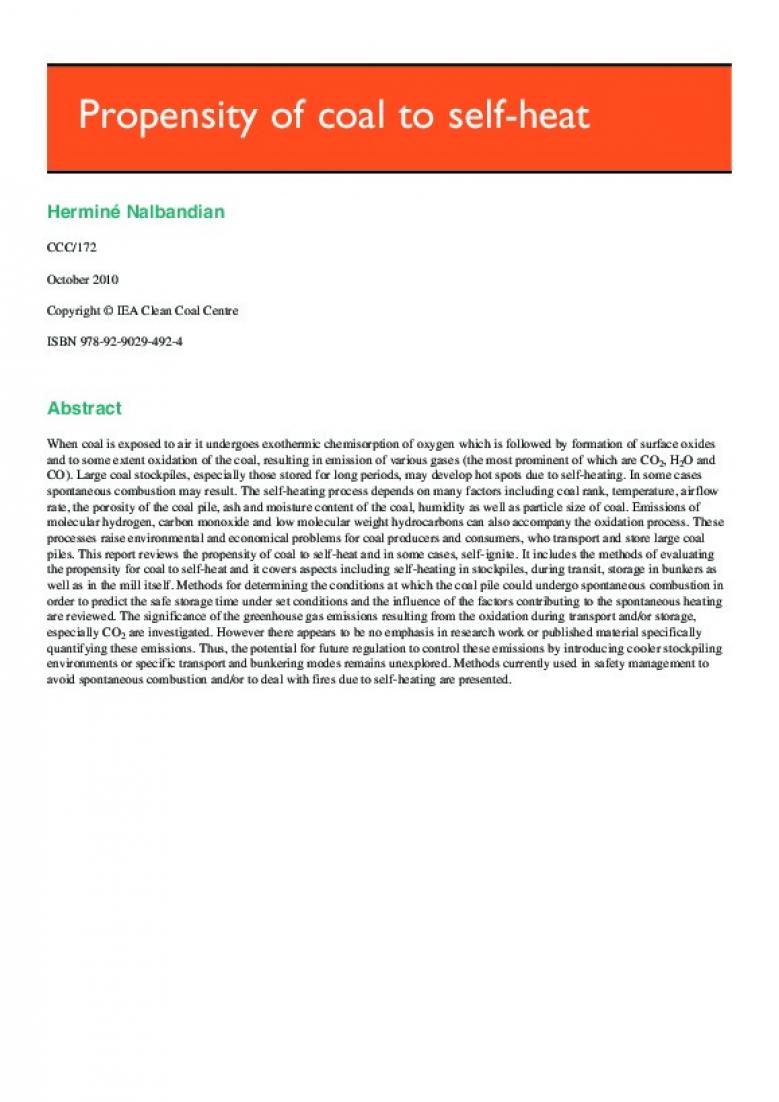CCC/172
October 2010
Copyright © IEA Clean Coal Centre
ISBN 978-92-9029-492-4
Abstract
When coal is exposed to air it undergoes exothermic chemisorption of oxygen which is followed by formation of surface oxides and to some extent oxidation of the coal, resulting in emission of various gases (the most prominent of which are CO2, H2O and CO). Large coal stockpiles, especially those stored for long periods, may develop hot spots due to self-heating. In some cases spontaneous combustion may result. The self-heating process depends on many factors including coal rank, temperature, airflow rate, the porosity of the coal pile, ash and moisture content of the coal, humidity as well as particle size of coal. Emissions of molecular hydrogen, carbon monoxide and low molecular weight hydrocarbons can also accompany the oxidation process. These processes raise environmental and economical problems for coal producers and consumers, who transport and store large coal piles. This report reviews the propensity of coal to self-heat and in some cases, self-ignite. It includes the methods of evaluating the propensity for coal to self-heat and it covers aspects including self-heating in stockpiles, during transit, storage in bunkers as well as in the mill itself. Methods for determining the conditions at which the coal pile could undergo spontaneous combustion in order to predict the safe storage time under set conditions and the influence of the factors contributing to the spontaneous heating are reviewed. The significance of the greenhouse gas emissions resulting from the oxidation during transport and/or storage, especially CO2 are investigated. However there appears to be no emphasis in research work or published material specifically quantifying these emissions. Thus, the potential for future regulation to control these emissions by introducing cooler stockpiling environments or specific transport and bunkering modes remains unexplored. Methods currently used in safety management to avoid spontaneous combustion and/or to deal with fires due to self-heating are presented.
| Attachment | Size |
|---|---|
| 943.13 KB |


